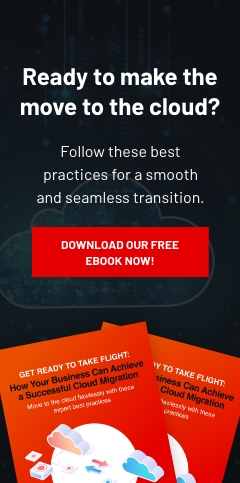No business is immune to data loss. According to the Verizon 2020 Data Breach Investigations Report, 28% of data breaches happened to small businesses. And once attackers get a hold of companies’ sensitive data, they can sell it on the dark web for a profit or use it for financial or identity theft. Incidentally, reports of identity theft in the United States escalated to nearly 1.4 million in 2020, which is more than double the number in 2019.
Small businesses need better cybersecurity protocols to protect themselves from data loss and identity theft. Here are some effective tips to try:
Once attackers get a hold of companies’ sensitive data, they can sell it on the dark web for a profit or use it for financial or identity theft.
1. Train your employees regularly
Back in December 2019, banking information for tens of thousands of Facebook workers was compromised when a thief stole several unencrypted hard drives from an employee’s car. According to Facebook, the hard drives should have never been taken out of the office. They consequently took appropriate disciplinary actions against the erring employee.
This is why constant user education is vital in preventing data loss and identity theft. Your leaders and employees are the ones primarily handling your data, so it’s important for them to know how to secure it. Set and clearly communicate basic data handling guidelines and penalties for violating certain policies.
2. Use strong passwords
The aforementioned Verizon study found that 81% of hacking-related breaches involve compromised and weak credentials. This is because many people use weak passwords like “12345678,” “fo0tball,” “picture1,” and “password” to secure their accounts.
Typical password policies require using special characters and numbers, but this makes passwords harder to remember. Alternatively, passphrases (i.e., passwords composed of a combination of words, such as “correcthorsebatterystaple” or “helentunefulLatrinestyrant”) are easier to remember and significantly harder for cybercriminals to crack.
3. Use multifactor authentication (MFA)
You can also use MFA to secure your account alongside passwords. MFA is an authentication method that grants account access only after users have successfully presented two or more pieces of evidence to prove their identity. These pieces of evidence could be a one-time code from an authentication app, physical security key, fingerprint, or facial recognition. With MFA, even if an attacker gets a hold of a user’s login details, they won’t be able to access the account without fulfilling the subsequent authentication requirements.
4. Keep your software up to date
Regularly updating your software and operating systems doesn’t just introduce new features, but it also patches security bugs that attackers may use to access your IT infrastructure. For example, antivirus definition updates contain critical files that can prevent viruses and other cyberthreats from damaging your system.
5. Adopt a zero trust model
The zero trust security model requires everyone accessing your network to be authorized, authenticated, and regularly validated before being provided access to certain information and applications. For example, employees are only granted access to the company resources they need to accomplish their tasks. This way, if a hacker infiltrates an employee’s account, they will not be able to access data from another department, thus reducing their potential attack surface.
6. Perform routine data backups
If you ever lose your data, having an up-to-date backup allows you to easily recover your files and resume your operations. Implement at least one of the following data backup methods:
- Hardware backups: Also known as local backups, these refer to the traditional method of storing backup files in local storage devices such as flash drives, external hard drives, DVDs, and magnetic tapes. Since you have physical access to these devices, connecting to your network and backing up is straightforward.
However, hardware backups can be relatively difficult to maintain. For instance, you’ll need to manually and regularly update your backups to include the latest versions of your data. What’s more, investing in a robust local backup solution starts at a few thousand dollars — and that’s only for a team of 10–15 people. - Cloud backups: These backups allow you to create, store, and retrieve data anywhere at any time via an internet-connected device. They are stored in multiple off-site servers in data centers that are maintained by a cloud service provider, protecting them against theft and common hardware failures. They are also easy to budget for, as you only need to pay a fixed monthly fee for storage, security, and maintenance.
- Hybrid backups: Hybrid backups are a combination of hardware and cloud backups. They offer both greater control over your data backups and the accessibility of cloud storage.
7. Encrypt data
Encryption turns plain text into an unreadable format, making it difficult for cybercriminals to intercept your data without the proper decryption key. This way, you can protect the confidentiality of digital data while it’s stored in your computer or transmitted through storage devices or via the internet, ensuring secure communications inside and outside your network.
Another effective way of protecting your business from data loss and theft is working with a reliable managed IT services provider like Complete Document Solutions. We will protect your systems from cyberattacks and ensure that your data is always accessible. If your business is in or around Los Angeles County or Orange County, you should partner with us. Contact our specialists to learn more.
Don't have an IT roadmap?



Leave a comment!